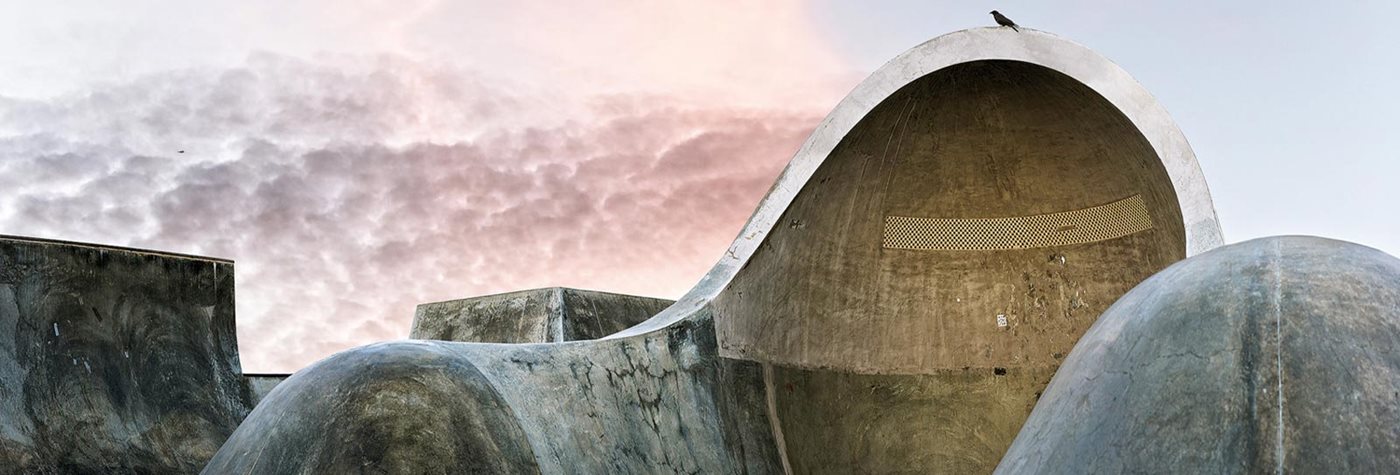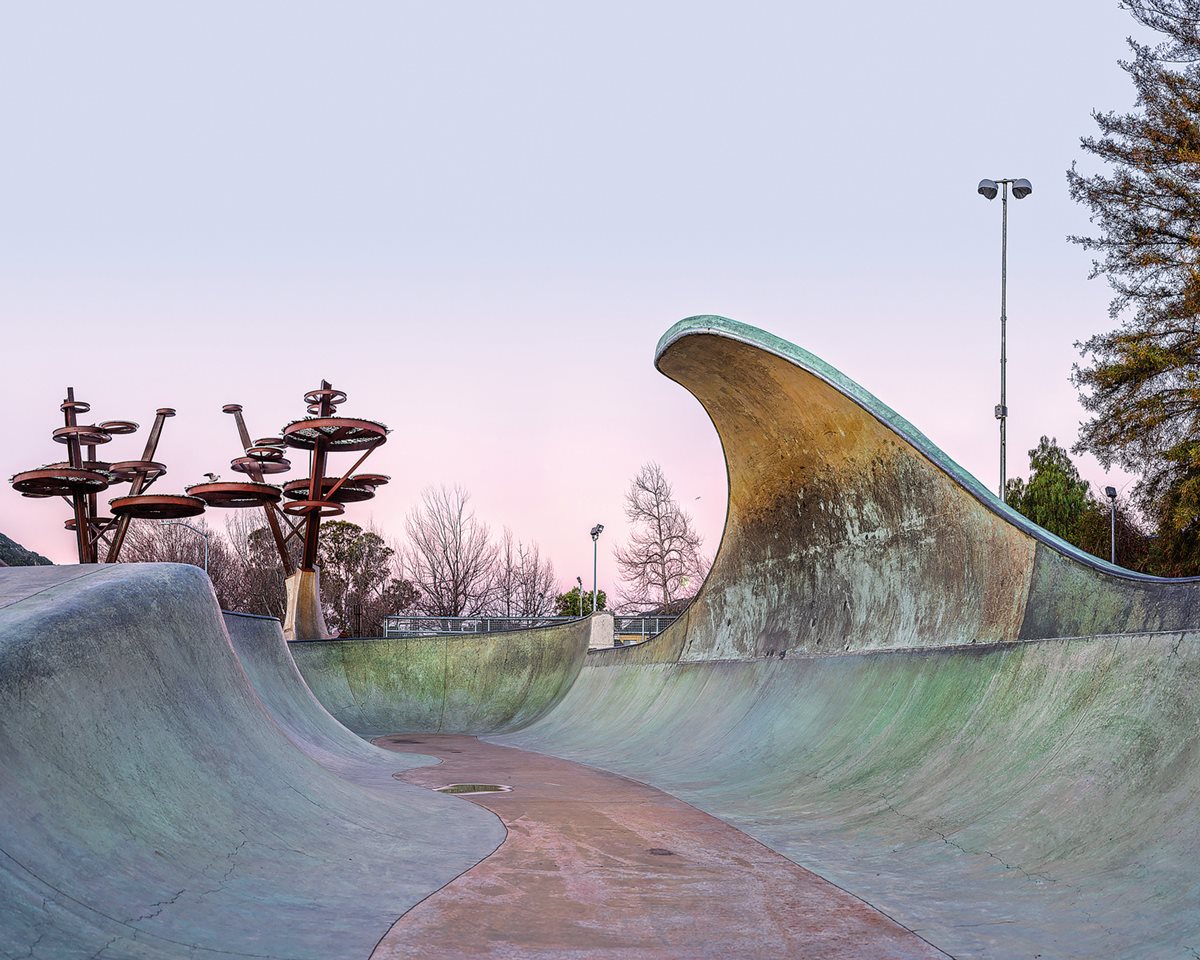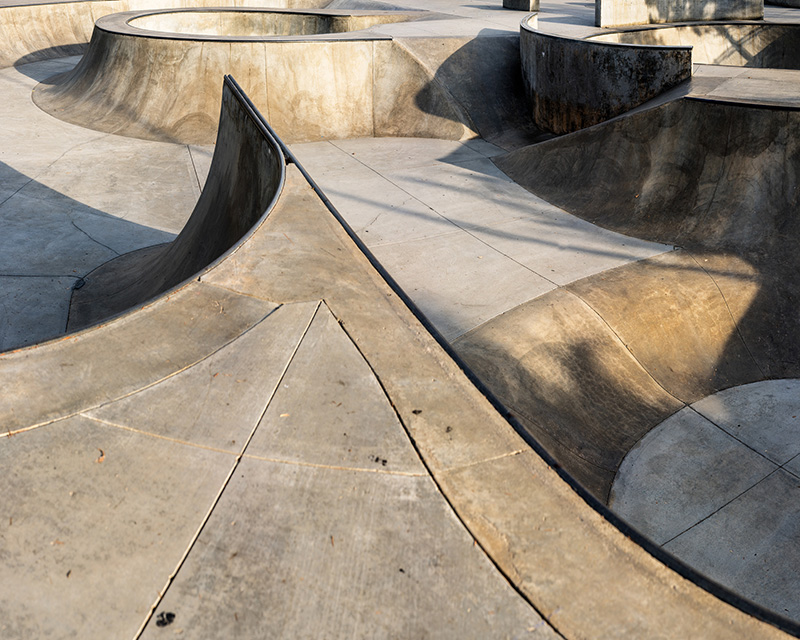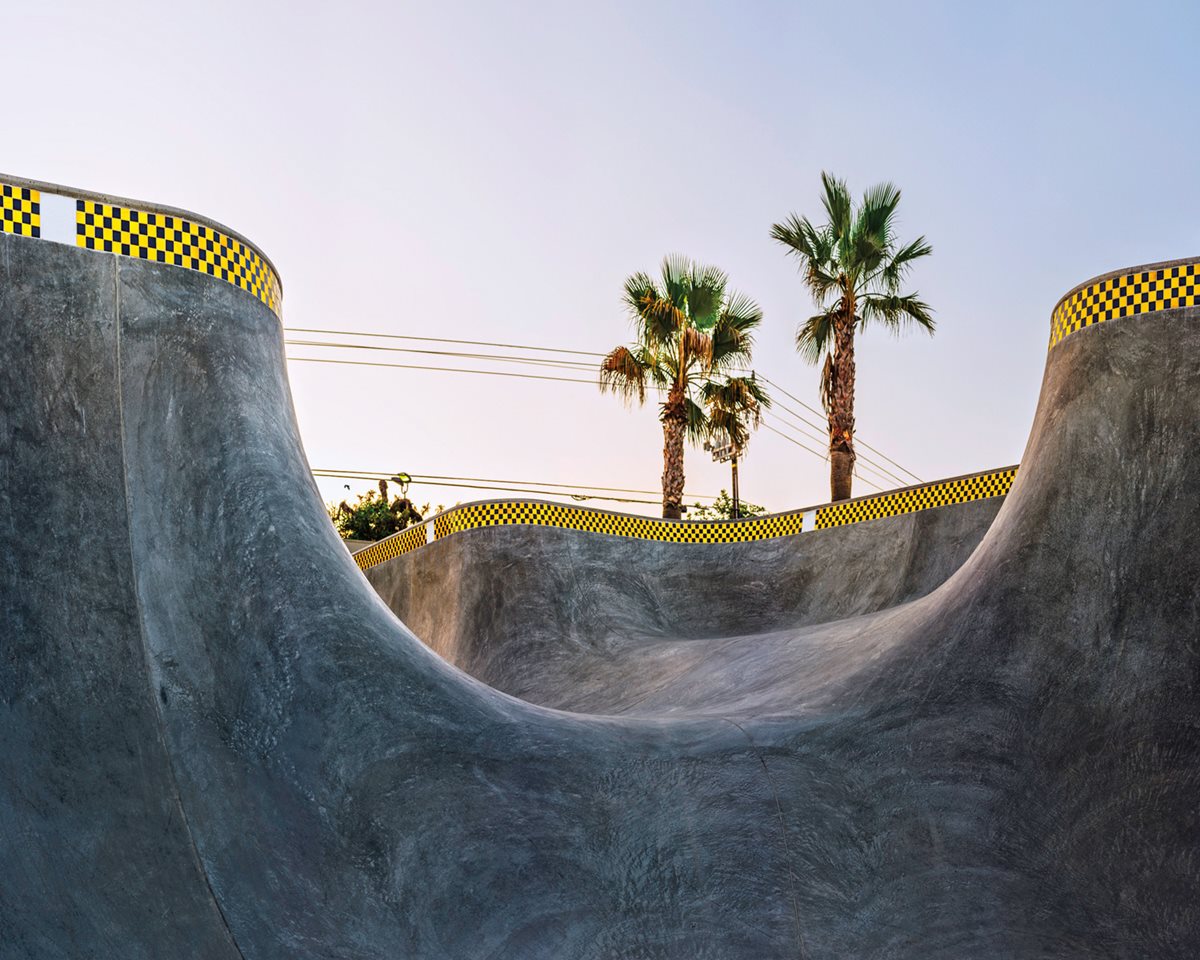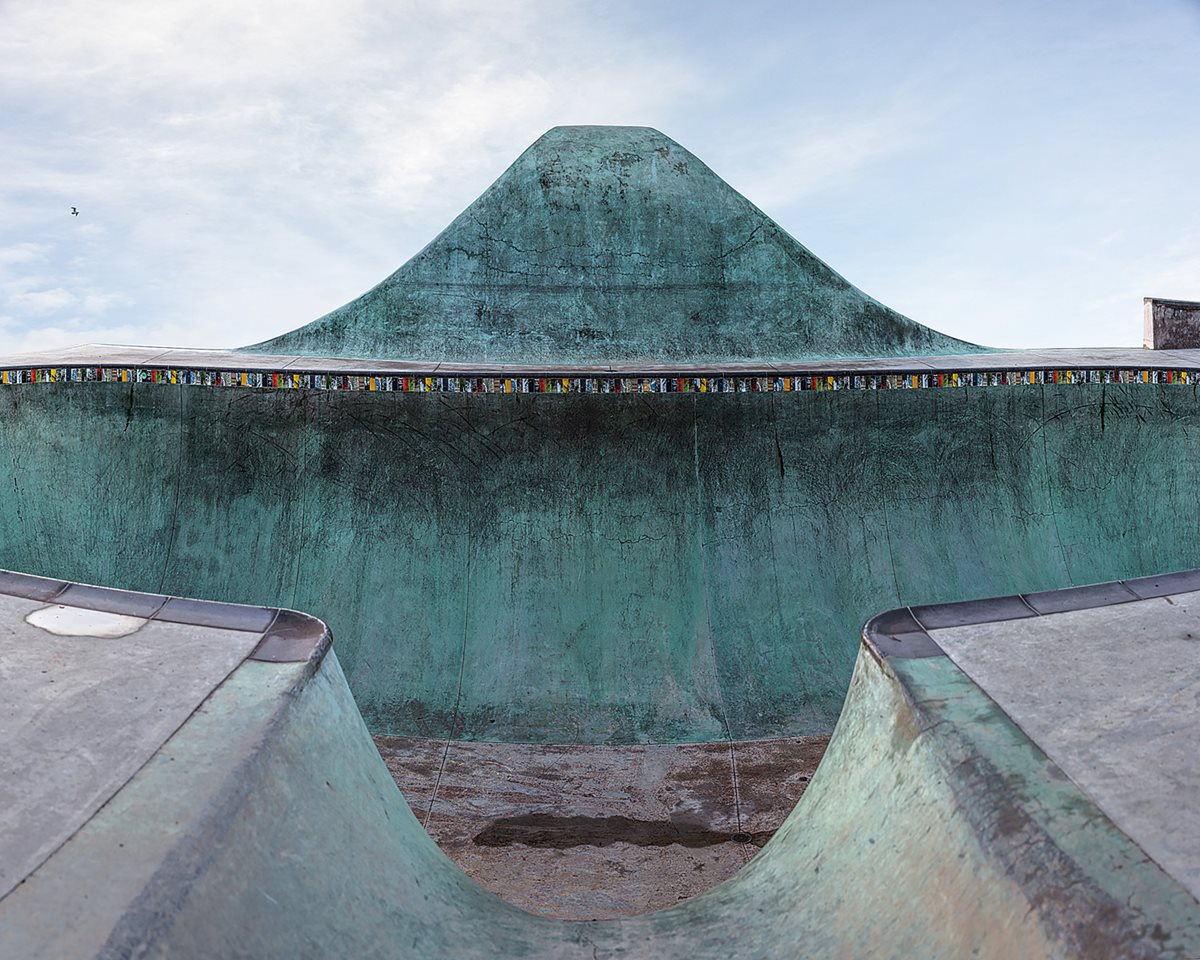Skateboard photography
Amir Zaki's Sculpture of Skateparks
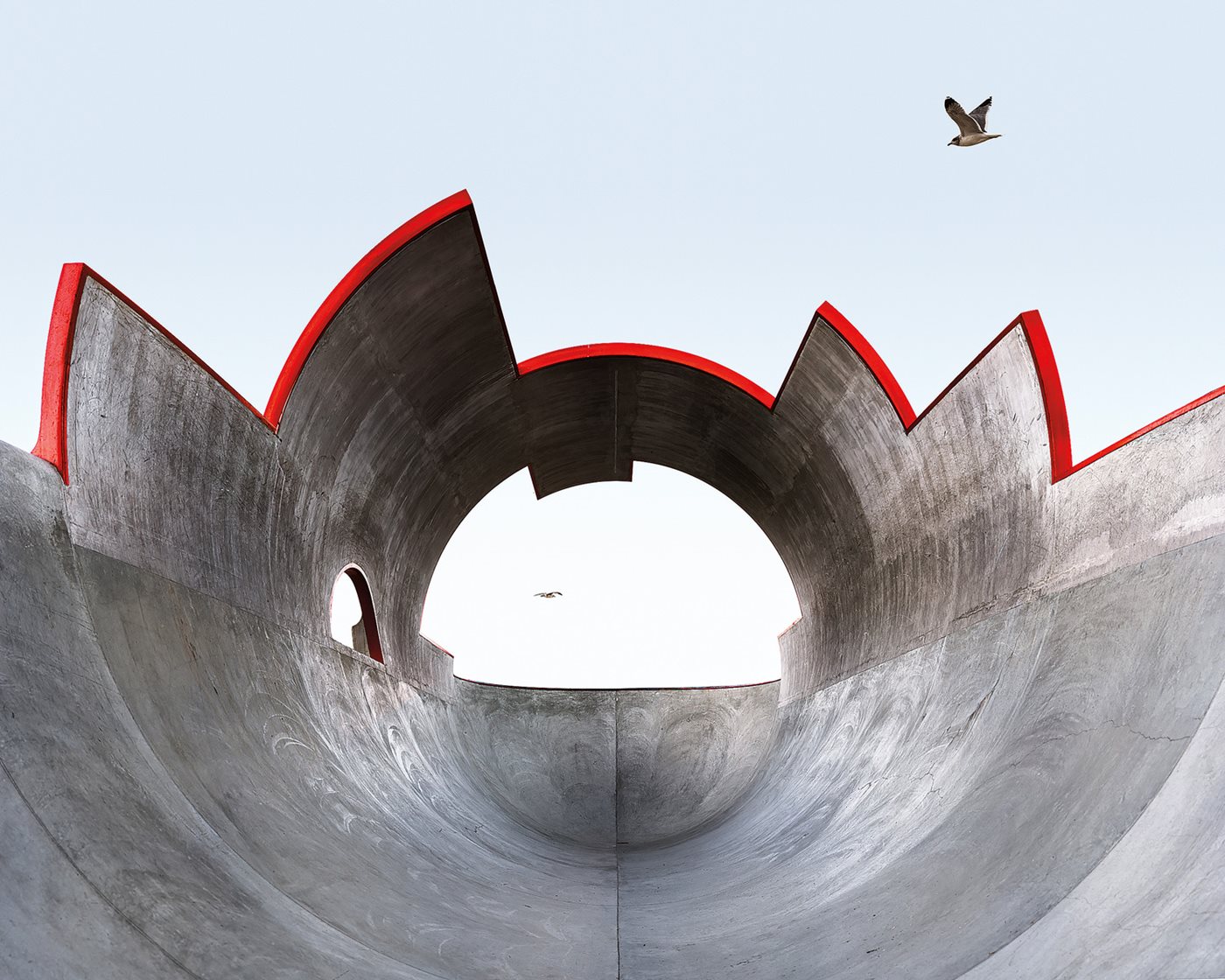
Global May 01, 2021 - By
When Amir Zaki looks at a skatepark, he sees more than a place to do tricks. He sees a geography in concrete, a landscape of hummocks, valleys, cornices, bowls, twisting riverbeds and waves.
“Now I go as an artist,” says the 46-year-old Zaki, who has skateboarded on and off over the course of his life and is now a professor of photography and digital technology at the University of California, Riverside.
Zaki’s ample body of work has been shown in museums and galleries throughout the US West Coast as well as New York and Atlanta, and abroad in Australia, China and Indonesia. Many of his shots transform everyday landscape objects—houses, vehicles, towers, rocks, bushes, trees or what have you—into carefully observed, often austere, graphic compositions.
His 2019 book, California Concrete: A Landscape of Skateparks, looks into a world largely unknown to nonskaters and, because skateparks are created below ground level, often invisible to them. And in the skateboarding world, Zaki’s images are unique for their focus on the empty, curvaceous, weathered concrete canvases upon which skaters carve their expressive, ephemeral lines.
His images contrast sharply with the action-oriented skateboard photography that helped popularize the sport in the 1970s and 1980s. Like the sport, it was imagery that came out of the visual depictions of surfing: rugged renegades adapting streets, sidewalks, handrails, plazas and pools into stunt arenas on days when they couldn’t go surfing. Popularized by magazines such as Thrasher, the most iconic action shots—famously from photographers Craig Stecyk, Hugh Holland and J. Grant Brittain, among others—focused on lone skaters, often shirtless, sometimes barefoot, almost always sun bleached.
Zaki’s focus on the forms of the skateparks themselves has won him admiration in the fine-art world. Virginia Heckert, curator of photography at The J. Paul Getty Museum in Los Angeles, says that when she first saw his skatepark images, she was drawn to the “sweeping, brutalist forms of the concrete skateparks that have an almost meditative quality.”
His images contrast with action-oriented skateboard photography.
It all started, Zaki recalls, with growing up in the 1980s in the “boring” Southern California town of Beaumont, on the eastern fringe of Los Angeles. Before becoming a camera enthusiast, he and his friends took to zipping around the wide, smooth streets and catching air off plywood backyard ramps.
“Skating was a big part of the culture and our identity,” says Zaki. His parents, he says, accepted it—as they did his decision later to pursue an art career. His late father, a plant pathologist and a Muslim, had come to the US from Alexandria, Egypt, and he met his mother, an educator and a Catholic, in Minnesota.
“Perhaps my dad—who became a teacher himself—would have liked me to study science, but mostly they wanted me to do what made me happy,” Zaki says. “I grew up a freethinker with parents who were the most open-minded people I could imagine,” he says.
A trip to Egypt at age 11 with his father had a particular impact, he says, on how he viewed the world. “I learned that there was much more than my suburban neighborhood. And my father’s family was so welcoming and caring, especially the grandfather I’d only met once,” he says. “I also learned humility by going someplace where you don’t understand the language. I learned patience for people who didn’t speak English, and that’s carried over to my career as a teacher.”
This kind of openness, it turned out, was also part of skateboard culture, where all you needed was a board to be accepted.
Yet Zaki never went to a skatepark. “They were sort of scary,” he says. “The closest skatepark was in Upland, 45 miles away. I never even went because I was intimidated by the older kids there, who were way better.”
In the 1980s and 1990s, the first skateparks were based on bowls, much like the empty backyard pools that, during the 1970s California drought, became the domains of early skateboarders. These first parks had fast transitions between flat bottoms and high, steep walls. Nowadays skateparks are complex, layered and infused with dimension and texture. This can be seen in Zaki’s photographs, which capture parks that have become increasingly elaborate as skateboarding has evolved toward ever-greater athleticism and technical difficulty. Now they are subterranean wonderlands of deep pools accompanied by quarter pipes, half and full pipes, handrails, snake runs, ramps, pyramids, boxes and rail slides. Each one is a unique, complex topography.
It was only after 1998, Zaki explains, that skatepark building took off. That was when California passed legislation declaring skateboarding a “hazardous recreational activity.” Those words freed municipalities from liability for injuries a skater might sustain in a publicly owned skatepark. As a result, there are now an estimated 450 skateparks in the state and hundreds more worldwide, all serving as both athletic and social hubs.
After Zaki earned a master’s degree in fine arts from the University of California, Los Angeles, he married and had two children. It was around then, in his early 30s while living in North Hollywood, that he was drawn to photographing a skatepark near his home. Dawn, when the shadows were long and he could be alone and unconcerned about being run over by younger versions of himself, turned out to be a beautiful time to visit.
“Early in the morning was when I could get down inside the skateparks, and that made the biggest difference in the kind of art I was able to achieve,” he says.
